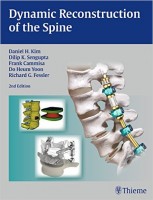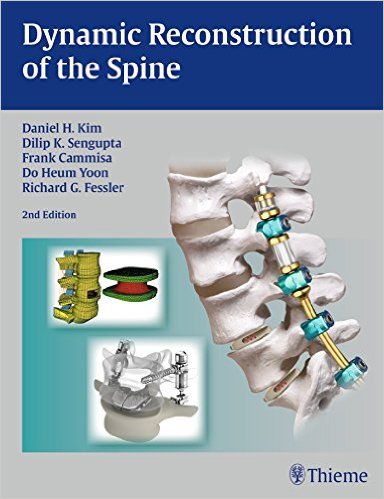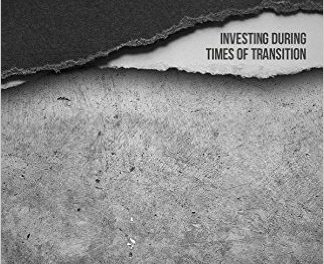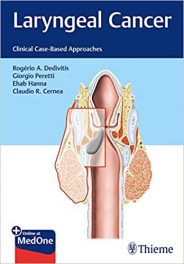 Editors: Daniel H. Kim, MD; Dilip K. Sengupta, MD; Frank P. Cammisa, Jr., MD; Do Heum Yoon, MD; and Richard G. Fessler, MD
Editors: Daniel H. Kim, MD; Dilip K. Sengupta, MD; Frank P. Cammisa, Jr., MD; Do Heum Yoon, MD; and Richard G. Fessler, MD
Publisher: Thieme – 457 pages
Book Review by: Deekay Daulat
This book is a valuable resource in preserving spine motion and stabilization. It provides you the fundamental science, including the necessary information on instrumentation and technologies required in achieving such goals for your patients. Among other benefits, this updated second presents to you:
- Answers to health economics questions from ethics committees and payers
- Guidance on how to address common safety and efficacy issues
- Information on how to successfully adopt new technologies
- Latest approaches, including minimally invasive surgery
- Enhanced details on the clinical biomechanics of the spine than the previous edition
Reconstruction of anything requires more planning and creative execution than the task of repair, especially when it involves interconnected moving objects or moving parts of an engine within a machine.
The human body is a machine, and one of the most complex ones on earth. Getting any biomechanical part of ourselves “fixed” is difficult enough, but when reconstruction is necessary, not only is much knowledge required for success, but also experience on prior successful outcomes as well. That experience, and insight as well, is shared with you by the numerous experts who have authored the chapters in this book.
The spine, or human vertebral column as it is referred to medically as a part of our anatomy, has different elements besides bone, its main component. Interconnected and interacting with it are blood, blood vessels (arteries and veins) cartilage, discs, ligaments, muscle, nerves, spinal cord, vertebrae, and other items.
Imagine the task of successful reconstruction of the spine, taking into account all of these structural and dynamic parts. It can be quite overwhelming, right?. That is the subject of this book, with parts written by experts in various areas of specialization.
This volume represents the collective work of 124 content contributors from the United States and 13 other countries – Australia, Austria, Brazil, China, Colombia, France, Germany, India, the Netherlands, Singapore, South Korea, Switzerland, and United Arab Emirates authored the 62 chapters of this book.
Most of these individuals are physicians and surgeons – who work in hospitals, universities, and research centers – and some engineers. Their areas of expertise are: bioengineering, biomechanics, medical writing, neurosurgery, orthopedics and orthopedic surgery, physical medicine, radiology, rehabilitation, spine surgery, and related fields.
This large book with 62 chapters is organized around 5 Parts which we list below to give you a broad overview of its contents:
- Motion Preservation of the Spine in Context
- Clinical Biomechanics of the Spine
- Restoration of the Cervical Movement Segment
- Restoration of the Lumbar Motion
- Advancements in Lumbar Motion Preservation
Here are some important features of this work:
- Substantial revision, with entirely new chapters encompassing three quarters of the book, including a large section on basic science, as well as more advanced biomechanics topics
- Highly visual – contains 20 percent more graphics than in the first edition
- Discussions and explanations of current advances in genetic and molecular technologies used to repair the spinal disc
- Unbiased critique of the pros and cons, clinical outcomes, and comparative advantages of different devices
In sum, this book provides updated (2015) information on the dynamic reconstruction of the spine. This is an area where innovations are quite frequent, so it is imperative that the practicing or aspiring spine surgeon get the latest knowledge and stay current for a successful career.
Editors:
Daniel H. Kim, MD, FAANS, FCS is Professor and Director of Spinal Neurosurgery, and Reconstructive Peripheral Nerve Surgery in the Department of Neurosurgery, Memorial Hermann, at the University of Texas Health Center in Houston, and at the Vivian L. Smith Department of Neurosurgery in Houston, Texas.
Dilip K. Sengupta, MD, DrMed is Director of Clinical Research and Attending Spine Surgeon at Texas Back Institute in Plano, Texas.
Frank P. Cammisa, Jr., MD, FACS is Chief of Spinal Surgical Service, and Attending Surgeon in the Spine Care Institute at the Hospital for Special Surgery; and Professor of Orthopedic Surgery at Weill Medical College of Cornell University in New York, New York.
Do Heum Yoon, MD, PhD is Professor in the Department of Neurosurgery at Yonsei University College of Medicine in Seoul, South Korea.
Richard G. Fessler, MD, PhD is Professor in the Department of Neurosurgery at Rush University Medical Center in Chicago, Illinois.







